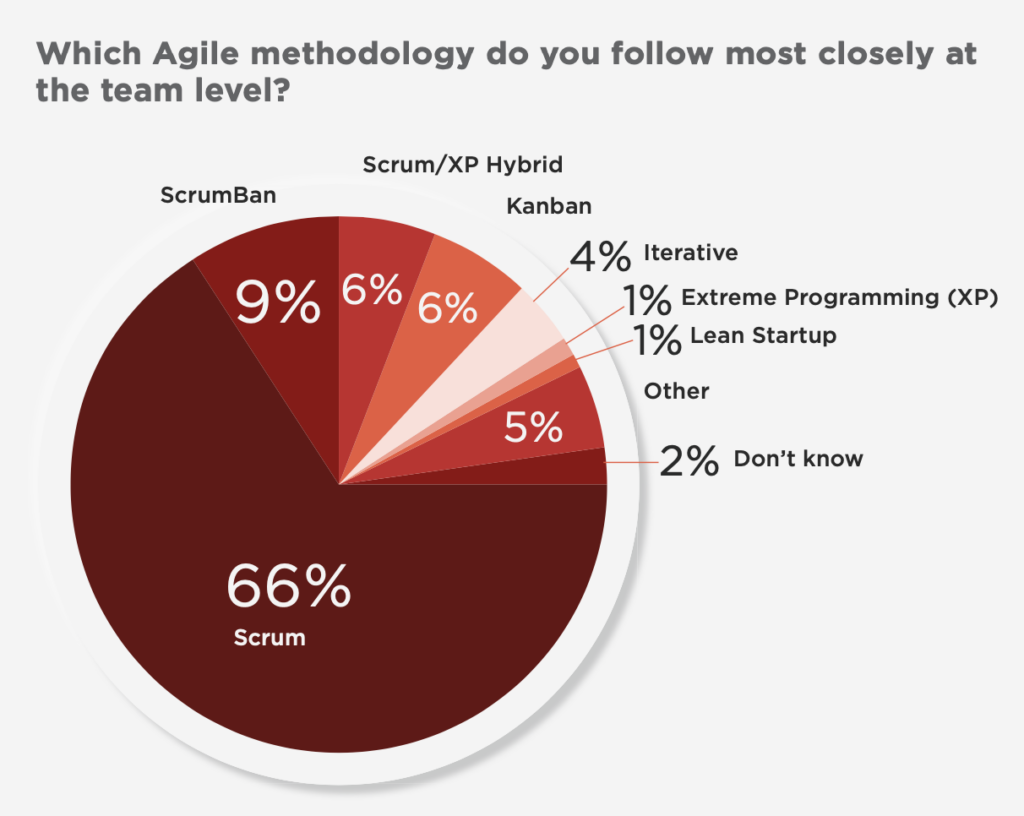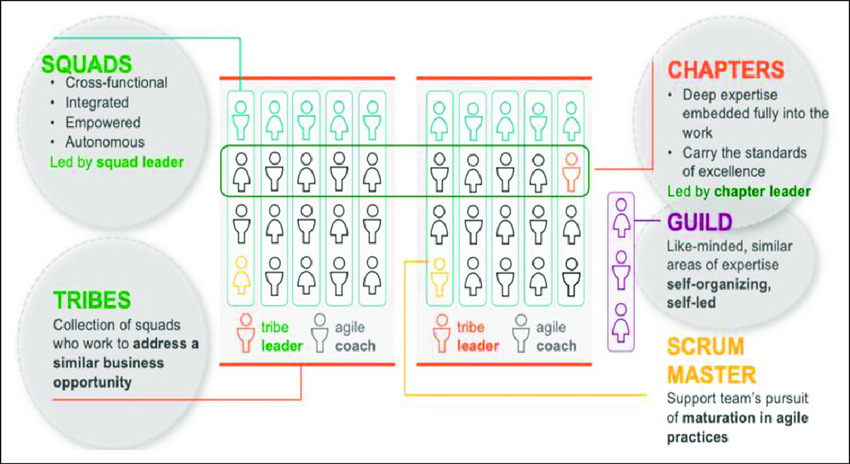
How to Implement Agile Development Practices like Spotify
As we move through 2024, Agile Development Practices shape how organizations approach project management and product development. Agile adoption among developers has skyrocketed from 37 percent to 86 percent over the past five years. Yet, implementing agile effectively is a formidable challenge that many organizations grapple with.
In this dynamic context, Spotify stands out as a beacon of agile excellence. The company’s unique approach, famously known as the Spotify model, has set new standards for scaling agility in tech organizations. Far from being a mere set of practices, the Spotify model represents a profound reimagining of how work can be structured to unleash innovation and responsiveness.
For Chief Technology Officers and experienced tech leaders eager to leverage the full potential of Agile, understanding and adapting Spotify’s model offers invaluable insights. This article delves into how Spotify’s groundbreaking methods can inform and enhance your own Agile practices, setting the stage for a more nimble and creative organization.
The state of Agile Development in 2024
The landscape of Agile development is evolving rapidly, with increasing adoption and refinement across industries. According to the 2024 State of Agile report, 94 percent of organizations have adopted agile practices in some form. This reflects a broad recognition of Agile’s effectiveness in improving project outcomes and team performance.
The same report highlights that 63 percent of organizations see a higher return on investment (ROI) from Agile projects compared to traditional approaches. Agile’s focus on iterative development and continuous delivery leads to more predictable and favorable financial results.
Research from McKinsey & Company reveals that companies practicing Agile experience a 30-40 percent reduction in time-to-market for new products and features. This accelerated delivery cycle is crucial in today’s competitive landscape, where speed can be a decisive advantage.

[Image Source: Anthony Mersino]
Key trends and statistical insights in Agile development practices
- 64 percent of companies using the Agile Software Development Lifecycle for custom software development have enhanced their ability to manage shifting priorities effectively.
- Adoption of Agile methodologies has led to a 47 percent increase in team productivity, with more efficient delivery of results.
- 61 percent of companies are using Agile to support both software development and comprehensive company-wide digital transformation.
- Agile methodologies maintain an 80th-percentile success rate compared to other models.
- 47 percent of organizations implementing Agile have observed improved communication and collaboration between IT and business teams.
The Spotify model: A new paradigm in agile development practice
Spotify’s approach to scaling Agile, introduced to the world in 2012 by Henrik Kniberg and Anders Ivarsson, goes beyond conventional frameworks. Rather than prescribing a rigid set of practices, the Spotify model is a dynamic blend of organizational structure, cultural principles, and operational strategies designed to foster an environment where agility thrives.
To understand how Spotify has achieved remarkable agility and innovation, it’s essential to delve into the core elements of its approach. At the heart of the Spotify model is a structure that promotes autonomy, collaboration, and flexibility. Let’s explore the foundational building blocks that make up this model, starting with the concept of Squads, which represents the essence of agility in Spotify’s organizational framework.

[Image Source: Researchgate.net]
Squads: The core of agility
At the core of the Spotify model are Squads, which function as autonomous, cross-functional teams. Each Squad is akin to a mini-startup, with 6-12 members who are responsible for a specific feature or product area. Unlike traditional Scrum teams, Squads have the freedom to select their own Agile methodologies—whether Scrum, Kanban or a hybrid approach. This autonomy is crucial for fostering a culture where innovation can flourish without being stifled by bureaucratic constraints.
Squads are not just about flexibility; they embody a deeper principle of empowerment. By giving teams the authority to define their own processes and tools, Spotify enables them to respond swiftly to changing requirements and market demands. This setup ensures that each Squad can operate efficiently, with a clear focus on delivering value.
Tribes: Enhancing coordination and alignment
When Squads working on related areas come together, they form a Tribe. A Tribe is a larger grouping of 40-150 people designed to facilitate coordination and alignment while maintaining the autonomy of individual Squads. Each Tribe is led by a Tribe Lead, who is responsible for ensuring that the Squads within the Tribe collaborate effectively and share knowledge.
The concept of Tribes addresses a common challenge in scaling Agile: maintaining cohesion and alignment across a growing number of teams. By grouping Squads with similar goals and providing them with a central coordinating figure, Tribes help prevent silos and ensure that teams work towards a common purpose without losing their independence.
Chapters and Guilds: Balancing autonomy with consistency
To maintain consistency and encourage knowledge sharing, the Spotify model incorporates Chapters and Guilds.
Chapters are groups of specialists—such as developers or testers—within the same Tribe. They are led by senior technology leads who ensure that best practices and standards are upheld across different Squads. Chapters help prevent the fragmentation of expertise and ensure that critical knowledge and skills are maintained.
Guilds are voluntary, cross-Tribe communities formed around specific interests or areas of expertise. Unlike Chapters, Guilds are not restricted by organizational boundaries and are led by coordinators who facilitate engagement and collaboration. Guilds provide a platform for sharing insights and innovations across the entire organization, fostering a culture of continuous learning.
The Trio: Ensuring balanced perspectives
The Trio—comprising a Tribe Lead, Product Lead, and Design Lead—is essential for maintaining a balanced perspective on feature development. This leadership trio ensures that product vision, design quality, and technical execution are aligned, providing a holistic approach to delivering features that meet user needs and business goals.
Alliances: Collaborating across tribes
As organizations scale, collaboration between multiple Tribes becomes necessary. Alliances are formed when several Tribes come together to work on larger, cross-functional goals. By coordinating efforts among Tribe Trios, Alliances enable teams to tackle complex projects that require input from diverse areas of expertise.
Assessing the benefits of the Spotify model in current Agile development practices
Spotify’s model is not just a theoretical construct; it has delivered tangible benefits that resonate with CTOs and technology leaders aiming to enhance their own Agile practices.
The emphasis on autonomy and flexibility within the Spotify model allows teams to experiment and innovate without being constrained by rigid processes. By enabling Squads to choose their own methodologies and tools, Spotify fosters an environment where creativity can thrive, leading to faster and more effective problem-solving.
Transparency is a cornerstone of the Spotify model. Regular Tribe gatherings and Guild meetings promote open communication and knowledge sharing, ensuring that teams are aligned with organizational goals and aware of ongoing developments. This level of transparency helps in building trust and cohesion within the organization, reducing the risk of misunderstandings and misalignment.
Spotify’s commitment to continuous improvement is evident in its use of retrospectives and hack days. These practices encourage teams to reflect on their processes, experiment with new ideas, and learn from their experiences. By embedding a culture of experimentation and learning, Spotify drives ongoing refinement and innovation.
Adopting Spotify’s Agile framework to your organizational needs: Considerations
While the Spotify model offers a compelling approach to Agile development, it is not without its challenges. CTOs and technology leaders should be aware of potential pitfalls and considerations when adopting or adapting the model.
1. Organizational fit and adaptation
The Spotify model was designed with Spotify’s unique culture and structure in mind. As such, it may not be a perfect fit for every organization. Adapting the model requires a careful assessment of your own organizational culture, goals, and existing processes. It is crucial to tailor the model to fit your specific context rather than attempting to implement it wholesale.
2. Balancing autonomy and coordination
The autonomy granted to Squads can sometimes lead to challenges in coordination and integration. Managing dependencies between Squads and ensuring effective collaboration across Tribes requires careful planning and communication. Striking the right balance between granting autonomy and maintaining necessary levels of coordination is essential for success.
3. Evolving with the organization
The Spotify model is not static; it has evolved over time to address new challenges and opportunities. Organizations adopting the model should be prepared to continuously adapt and refine their approach based on their evolving needs. This iterative process is crucial for sustaining agility and ensuring long-term success.
For CTOs looking to leverage the principles of the Spotify model rather than replicating Spotify’s model in its entirety, focus on understanding the underlying principles and adapting them to your own organization. Tailor the model to fit your specific needs and culture, rather than imposing a one-size-fits-all solution.
Spotify’s transparency is achieved through regular knowledge-sharing gatherings. In specialized industries, establish communication channels that cater to sector-specific needs. In the pursuit of agility, remember that the journey is as important as the destination. The Spotify model provides a valuable starting point, but true agility comes from continuously evolving and adapting to meet the needs of your organization and its people. As you navigate the complexities of implementing Agile.
In brief
Spotify’s approach to Agile development offers a transformative vision of how work can be organized to foster creativity, efficiency, and rapid response. By focusing on autonomy, transparency, and continuous improvement, Spotify has created a model that enables teams to thrive in a dynamic and rapidly changing environment. For CTOs and technology leaders, the key to leveraging the Spotify model lies in understanding its principles, adapting them to fit your organization, and fostering a culture of agility and collaboration.